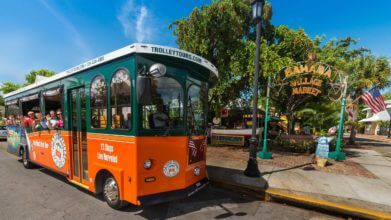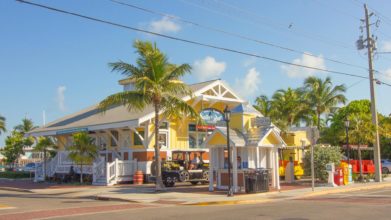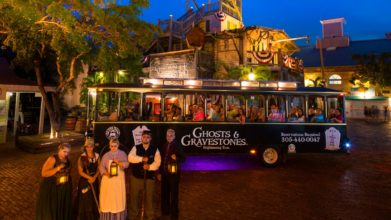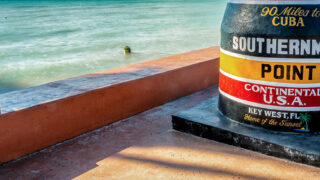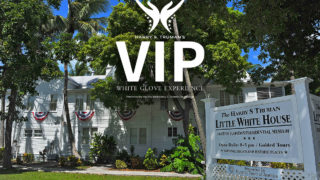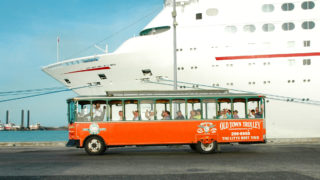Old Town Architecture and Culture in Key West

Old Town in Key West is celebrated for its historic architecture and vibrant cultural life. With its colorful wooden houses and historic streets, this neighborhood showcases a large collection of wooden buildings, many of which date back to the late 19th century. As a top destination for visitors, Old Town exemplifies how Key West’s unique history and charm are woven together through its architecture and community activities.
Exploring the History and Style of Key West Architecture
Key West’s Old Town is one of Florida’s most historically significant areas, where well-preserved homes and buildings tell the story of the island’s evolution. The Key West architecture found here blends influences from Bahamian, Cuban, and Victorian design, each style reflecting the island’s diverse cultural heritage. From wooden cottages built by shipbuilders to ornate mansions constructed during the Gilded Age, every structure holds a unique place in Key West’s history. This guide explores the distinctive architectural styles, notable landmarks, and the preservation efforts that continue to safeguard architecture in Key West for future generations.
Historical Overview of Old Town Key West
Key West’s Old Town district is one of the largest historic districts in the U.S., containing more than 3,000 historic buildings, some dating back over 200 years. The architecture in Key West developed as the island became a hub for maritime trade, attracting Bahamian settlers, shipbuilders, and Cuban cigar makers. The distinctive conch architectural style emerged from this mix of influences, emphasizing practicality, craftsmanship, and the use of local materials. Many early homes were built from salvaged shipwreck wood, a testament to the ingenuity and resourcefulness of Key West’s early residents. The combination of durable materials and thoughtful design allowed these structures to withstand hurricanes, tropical storms, and the passage of time. Today, walking through Old Town feels like stepping into a living museum of Key West architecture, where every street holds a piece of the island’s past. Visitors can explore the neighborhoods on foot or by bicycle, admiring the intricate details that make these homes stand out against the lush tropical backdrop.
Architectural Styles in Old Town
The architecture in Key West is as varied as the people who have called the island home. From traditional conch houses built to endure the tropical climate to grand Victorian mansions that showcase elaborate craftsmanship, these buildings provide a glimpse into the island’s layered history. The variety of structures highlights the ingenuity of Key West’s early residents, who used the materials available to them to construct homes that were both beautiful and practical.
Conch Houses – Traditional Key West Homes
Built by Bahamian immigrants in the 1800s, conch houses are a defining element of Key West architecture. These homes were designed with the island’s hot and humid climate in mind, featuring tall windows for ventilation, broad porches for shade and pastel-colored exteriors that reflect the sun’s heat. Most conch houses were elevated on piers to protect against flooding, and many include louvered shutters, tin roofs and wooden siding for durability. The homes along Elizabeth Street and Truman Avenue are some of the best examples of this style, each showcasing a blend of practicality and elegance. Over time, many of these homes have been restored, ensuring that this iconic form of architecture in Key West continues to be appreciated by both residents and visitors. Preservationists and homeowners take great care to maintain the original character of these buildings, ensuring that they remain a vibrant part of the community.
Victorian Mansions – Ornate Homes of the Gilded Age
During the late 19th century, Key West experienced an economic boom, largely due to the thriving cigar-making industry and maritime trade. This period of prosperity led to the construction of grand Victorian mansions, which remain some of the most striking examples of Key West architecture today. These homes, often built for wealthy merchants and influential families, feature intricate woodwork, decorative gingerbread trim, and spacious wraparound porches. The Curry Mansion and The Southernmost House stand as two of the most impressive examples, reflecting the island’s architectural splendor during this era. With their detailed craftsmanship and elegant proportions, these mansions highlight the contrast between the working-class homes and the more opulent side of architecture in Key West. Many of these homes have been converted into boutique hotels or museums, allowing visitors to step inside and experience the grandeur of the past firsthand.
Shotgun Houses – Compact and Historic Homes
While the Victorian mansions of Old Town symbolize wealth and prosperity, shotgun houses represent the ingenuity and resilience of Key West’s working-class residents. These long, narrow homes were designed to maximize airflow, with a straight, unobstructed path from the front door to the back. Popular among cigar factory workers and laborers, shotgun houses were built efficiently and economically, making them one of the most widespread residential styles in Old Town. Many of these homes still stand today, particularly in Key West’s historic neighborhoods, offering insight into the everyday lives of those who built the island’s economy. As an essential part of architecture in Key West, shotgun houses continue to be restored and preserved, maintaining their role in the city’s historic landscape. Walking through these neighborhoods, visitors can appreciate the simplicity of these structures, which remain an essential part of the island’s architectural identity.
Historic Landmarks and Architectural Sites – Key West’s Must-See Architectural Structures
Key West’s historic architecture is not limited to residential homes. The island is also home to well-preserved landmarks that showcase different architectural styles, from Spanish Colonial to Classical Revival. These buildings highlight the influence of shipwreck salvaging, maritime trade and political history, making them essential stops for those interested in Key West architecture.
Hemingway Home & Museum – Spanish Colonial Style
Built in 1851, the Hemingway Home is one of the most well-known examples of architecture in Key West. This limestone mansion, once home to Author Ernest Hemingway, features arched windows, wrought-iron balconies and lush tropical gardens that reflect the Spanish Colonial style. The home’s thick limestone walls keep the interior cool, an essential feature for Key West’s climate. Visitors can tour the rooms where Hemingway wrote some of his most famous works while admiring the estate’s distinctive architectural details. The property is also home to the famed six-toed cats, descendants of Hemingway’s pets, adding an extra layer of charm to this already historic site. Its sturdy construction and elegant design make it a standout among the island’s preserved landmarks.
Harry S. Truman Little White House – Classical Revival Architecture
Originally built in the 1890s as a naval command headquarters, the Harry S. Truman Little White House later became the winter retreat of President Truman. As an example of Classical Revival architecture, the home features white clapboard siding, a columned porch and a simple yet stately design. Today, it serves as a museum dedicated to Truman’s presidency, offering guided tours that explore both the political and architectural history of the home. The house retains many of its original furnishings, allowing visitors to step back in time and see where key decisions were made. It remains the only presidential museum in Florida and an essential stop for history enthusiasts interested in both American governance and architecture in Key West.
Key West Shipwreck Treasure Museum – Historic Maritime Structure
Key West’s economy was once centered around shipwreck salvage, and the Key West Shipwreck Treasure Museum reflects this maritime heritage. Built in the style of a 19th-century wrecker’s warehouse, the museum includes a 65-foot lookout tower reminiscent of those used by early wreckers to scan for distressed ships. The building’s wooden construction and nautical design make it an excellent representation of historic Key West architecture. Inside, visitors can explore artifacts recovered from shipwrecks, view interactive exhibits, and even hear tales of wreckers who braved dangerous waters to recover valuable cargo. The museum’s design, complete with exposed beams and weathered wood, reinforces the connection to Key West’s maritime roots and its long-standing tradition of salvaging goods lost at sea.
Oldest House Museum and Garden – Classic Conch Architecture
Built in 1829, the Oldest House Museum is the oldest surviving home in South Florida and an enduring example of early architecture in Key West. The home features wide porches, hurricane shutters, and a sloped metal roof, all characteristic of classic conch-style architecture. The museum offers insight into the lifestyle of Key West’s early residents and the preservation techniques used to maintain historic homes. The lush garden surrounding the house provides a peaceful retreat, featuring native plants that would have been commonly used by early settlers. The home’s simple yet practical design highlights the ingenuity of Key West’s earliest builders, who crafted homes that could withstand tropical storms while remaining cool in the heat.
Exploring Old Town With Old Town Trolley Tours®
For those looking to see multiple historic sites without worrying about transportation, Old Town Trolley Tours® provides a fully narrated experience through Key West architecture and history. Stops include the Hemingway Home, Truman Little White House, and the Oldest House Museum. The hop-on, hop-off flexibility allows visitors to explore these landmarks at their own pace while learning about the significance of architecture in Key West. The trolley’s route winds through the heart of Old Town, offering glimpses of colorful conch homes, grand Victorian mansions and historic churches. Tour guides provide fascinating details about the architectural influences that shaped the island, making the experience both educational and immersive. The trolley’s open-air design allows for unobstructed views, making it a great way to take in the charm of Key West’s streets while gaining deeper insight into its historical significance.
Preservation Efforts and Historical Societies
The Old Island Restoration Foundation plays a crucial role in preserving historic homes, offering annual tours that showcase private residences. Many buildings in Key West are protected under the city’s Historic District guidelines, ensuring that modernization efforts do not erase their architectural integrity. Restoration projects focus on maintaining traditional materials, colors and structural elements that define the unique Key West architecture landscape. These efforts involve painstaking work to replicate original designs, from hand-carved wooden trim to authentic roof shingles. Organizations also work to educate homeowners on the importance of maintaining these historic buildings, providing resources and funding to assist with preservation. Without these initiatives, much of Key West’s architectural charm would be at risk of being lost to time. Today, thanks to dedicated preservationists, Old Town remains one of the best places to experience authentic architecture in Key West while appreciating the craftsmanship of those who built it centuries ago.
Notable Architects and Historic Districts
Key West’s distinctive architectural landscape would not exist without the vision and craftsmanship of influential architects who shaped the island’s historic buildings. Their work, along with the preservation of entire districts, continues to define the character of Key West architecture today.
Key Architects Who Shaped Key West
- William Kerr – Designed many of Key West’s early mansions and public buildings, incorporating Victorian and Classical Revival elements that remain integral to the island’s identity.
- George Carey – Known for his work on Key West’s historic cigar factories and commercial structures, his buildings reflect the industrial and economic boom of the late 19th century.
- Joseph Yates Porter – As Florida’s first public health officer, Porter’s influence extended beyond medicine, shaping Key West’s medical and residential buildings to better withstand tropical conditions.
Historic Districts and Notable Streets
- The Meadows – One of the oldest residential areas in the city, The Meadows is home to classic conch houses and early 20th-century architecture. The district is a well-preserved example of how architecture in Key West has evolved while maintaining its distinct tropical charm.
- Bahama Village – Reflecting the strong Bahamian and Afro-Caribbean heritage of Key West, Bahama Village is known for its brightly painted homes, historic churches and community-driven restoration efforts. This area showcases how Key West architecture blends cultural influences with functional design.
- Duval Street – While Duval Street is famous for its lively nightlife, it also features several historic landmarks, including the oldest wooden house in Key West. Walking along Duval Street provides a closer look at the architectural diversity that defines the island.
A Living Architectural Treasure
Key West’s Old Town is one of the most architecturally unique and historically rich places in the U.S. The combination of well-preserved homes, diverse influences and ongoing restoration efforts makes Key West architecture an essential part of the island’s identity. Whether exploring on foot or by Old Town Trolley, visitors can immerse themselves in centuries of history, art and Caribbean influence. Each structure tells a story, preserving the spirit of the island for generations to come.
FAQs – Everything You Need To Know About Key West Architecture
What is the best time to visit Key West to explore historic sites?
The best time to explore Key West architecture is during the cooler months, from November to April. The weather is comfortable for walking tours, and many historic homes and museums offer special events or extended hours during peak travel seasons.
Are there guided tours focusing on Key West’s architecture?
Yes, there are several guided tours dedicated to architecture in Key West, including walking tours, bike tours and the Old Town Trolley Tour. Many of these highlight historic districts, notable architects and the preservation efforts that keep Key West’s heritage intact.
How has Key West preserved its historic buildings?
Key West has strict historic preservation guidelines in place to protect its architectural heritage. Organizations like the Old Island Restoration Foundation and the Key West Historic District Board oversee restoration projects to ensure that buildings maintain their original materials, colors and styles. These efforts have helped keep Key West architecture authentic and well-preserved.
What are some must-see architectural landmarks in Old Town?
Old Town Key West is home to several must-see landmarks, including the Hemingway Home & Museum, the Harry S. Truman Little White House, the Oldest House Museum and the Key West Lighthouse. Each site showcases a different aspect of architecture in Key West, from Spanish Colonial design to traditional conch houses. Exploring these landmarks provides a deeper appreciation for the island’s architectural and cultural history.

